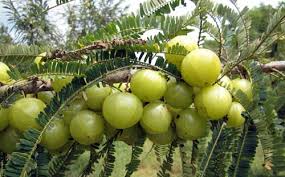Author:
Dr Sneha B. Bevinamarad
Associate Professor
Department of Case taking and Repertory
MNR Homoeopathic Medical College, Sangareddy, Telengana
Abstract:
Curare also called as arrow poison, was used for around 400 hundred years ago by the South American Indians upon their arrows. Since its discovery it has been used for various purposes like hunting, animal vivisection laws, science fiction comics and also as general anesthesia. In Homoeopathy it is used as a great remedy for paralysis of various kinds. This medicine is studied in view of repertory and found to be listed under many of the peculiar mind symptoms. The aim of this study was to know the peculiar symptoms of the medicine from reportorial point of view other than those quoted in the regular books of materia medica after a case of drug addiction was repertorised considering the mental symptoms and was successfully treated by Curare.
Introduction:
Curare is the generic name used for alkaloid substances extracted from stem or root bark of Strychnos plant species. It has the history of being used since more than 400 years ago.
Curare was used for around 400 hundred years ago by the South American Indians upon their arrows. Then in 1895 a pharmacologist Rodulf Boehm’s classified it under 3 main types. [1, 4, 5]
1. tube or bamboo curare – the poison was packed in hallow bamboo tubes. It was the extract from Chondrodendron containing main toxin D – Tubocurarine
2. pot curare – this poison is packed in terra cotta pots with alkaloid components potocurarine, protocurinr and protocuridine.
3. Calabash or gourd curare – packed in hollow gourd with the main toxin C toxiferine.
In 1940s, this first neuromuscular– blocker containing D – Tubocurarine was used in anesthesia which was the revolution in modern medicine. The credit of introducing curare to anaesthetics belongs to Harold Randall Griffith, an anaesthetist at the Homeopathic Hospital in Montreal, in July 1942[2]. It marks the beginning of the utilization of neuromuscular blocking agent, gateway to the current form of anesthesia used by the surgeons worldwide.
Properties:
Curare is from plant remedy, prepared from including various tropical American plants of which Chondrodendron species of the family Menispermaceae and Strychnos species of the family Loganiaceae.
Curare used in Homoeopathic preparation is from Loganiacea family: strychnos toxifera. The part of the plant used for this preparation varies according to the literature, some say it is a thick juice and some say it is a resin. But according to GUERMONPREZ M., it is the bark or the root of the plant. [3]
Curare is bitter to taste, soluble in cold water to about 75 per cent. Curarine (C18H35N) an alkaloid, aromatic and nitrogen containing structures was discovered by Roulin and Boussingault. Colorless or white, bitter to taste, soluble in water, and alcohol.[4]
Figure1: Different species of Curare

Mechanism of action:
Curare is a non-depolarizing muscle relaxant which blocks the nicotinic acetylcholine receptor, a sub type of acetylcholine (ACh) receptors, at the neuromuscular junction which leads to weakness of the skeletal muscles [3,4,5]
Figure2: Mechanism of action

Curare produces poisonous effects only when it has penetrated into the circulation, either by means of a wound, by rectal injection, or by inhalation. It first paralyzes the voluntary and then involuntary muscles. When applied on skin it causes irritation. When administered in large doses, death occurs by asphyxiation due to paralysis of respiratory muscles.[3,4,5]
Action of curare is seen only on parenteral administration as gastro intestinal absorption is ineffective.
Curare as a Medicine:
For ages it was used in treating snake poison, worm infestations, tetanus poisoning, muscle relaxant and lastly as anesthesia.
In homoeopathy, it is a well known and often used medicine for muscular paralysis.
Curare act on the periphery of the motor nerves, producing paralysis of motion without disturbance of sensation. [6] Dr Farrington considers Curare to be of great importance in vertigo especially when it is associated with weakness of legs. At times this giddiness is most instantaneous and followed by vomiting of bile, sooner or later. He has also treated the case of cirrhotic liver with Curare 500th.Curare is also recommended for dyspnea of emphysema when the patient eems to be gone, in 3rd and 6th potency, according to Dr Pitet of Paris. [6]
The patient falls down in a swoon or fainting fit while standing or walking. Also useful in distressing dyspnea which is marked while falling asleep, frequently threatened with paralysis of respiration. [7]
It is being proved useful even in veterinary cases, as a great remedy in the treatment of myasthenia gravis. [3]
Muscular paralysis without impairing sensation and consciousness.Diminished reflex action. Sensation of heavy weight hung to the parts like arms, legs.Legs tremble, give away walking. Aggravation from motion, dampness, cold weather, 2 a.m. [8]
Debility of aged and from loss of fluids. Glycosuria with motor paralysis. Curare decreases the output of adrenaline. Cured cases of diabetes mellitus in 4th dilution by Dr. Burkhardt. Chest sore to pressure with very distressing dyspnoea. Favours development of corns. [9]
Indecision, no longer wishes to think or act for herself. [10]
Mental symptoms range from depression, indecisiveness, forgetfulness, hurriedness, aggressive anger and suicidal disposition to euphoria, ecstasy, desire to travel and want of moral inclination. Becoming self destructive in return and seeking isolation from other people. Like Pulsatilla, their typical delusion that everything is dirty and their repugnance to sexual intercourse. Other keynotes are hypochondrias, nervous debility, haggard and sunken eyes, dizziness, when looking at near objects or water, difficulty in swallowing, threatened paralysis of lungs on falling asleep.[11]
Relationship: [9, 12]
Antidote by: artificial respiration. bromine, & chlorine destroys the poisonous effects. Tobacco or salt, applied topically, neutralize effects of curare wounds.
Curare antidotes Strychnia and to poison of rabies.
Compatible after Arnica (paralysis from injury). After Belladonna in paralysis after epistaxis.
Follow well in debility of the aged: Baryta carb.
Compare:
1. cystisin – motor paralysis.
2. crot-h – blows in region of cerebellum.
3. In yellow-brown spots on skin – sepia, lyc, nux v, sulph.
4. Aranea in fevers, agg from damp wet weather.
5. Ferrum, in hammering pains in head.
6. Con, casut, crot-h, nux-v.
A case treated by Curare:
A teenage boy was accompanied with parents for the treatment of drug addiction. The case was studied considering two aspects, his behavior and mental status before and during addition. After detailed case taking following symptoms were recorded. Repertorisation was done for both the group of symptoms through complete repertory, Zomeo software. After referring materia medica and differentiating with other medicines, final remedy, Curare was selected. It was prescribed in 200c potency with few repetitions when required successfully.
Figure3:
Repertorisation of symptoms before addition by Complete Repertory .[11]

Figure 4: Repertorisation of symptoms during addition.[11]

There after other symptoms of curare were studied and found that curare was listed as a single, three marks remedy for following symptoms.
Figure 5:
Three marks symptoms of Curarae listed in complete repertory. [11]

Conclusion:
Curare has been used by many successful homoeopaths in treating various cases of muscular paralysis from many years, but the other symptoms of this medicine like mentals can also be useful. Also there are so many such medicines in our system that are hardly used in day to day practice which when prescribed have given wonderful results. There is a need to study such remedies not only from the books of materia medica but also along with the reportorial approach. When repertorising the case we came to know about the various other symptoms of the same medicine which were not given as a very striking or peculiar symptom in our regular books of materia medica. Also the same remedies are given under different gradations in different repertories. Hence it is time to upgrade our repertories as well as materia medica by reproving and clinical verification of such medicines.
References:
1. Adam Thot, 400 years in the making: The Discovery of Curare and its role in transforming Anaesthesia. May 2012. Available from: https://www.slideshare.net/skitzer86/curare-presentation
2. Manish Pal Singh, Ragvendra Singh Bhaduaria , C. S. Sharma. Neuromuscular Blocking Agents (NMBAs): An Overview Journal of Chemical and Pharmaceutical Research, 2010, 2(2). Available form: http://www.jocpr.com/articles/neuromuscular-blocking-agents-nmbas-an-overview.pdf
3. Claudio Martins Real. Curare and its Veterinary use in Myasthenia gravis. Hpathy, May 5, 2011. Available form: https://hpathy.com/materia-medica/curare-and-its-veterinary-use-in-myasthenia-gravis/
4. Harvey Wickes Felter, M.D., John Uri Lloyd, Phr. M., Ph. D. King’s American Dispensatory, 1898, Henriettes Herbal Homepage, Practical herb cards2, 28th Feb 2014. Available from: https://www.henriettes-herb.com/eclectic/kings/curare.html
5. Wikipedia, the free encyclopedia. Curare, edited on 6th Jan 2020. Available from: https://en.wikipedia.org/wiki/Curare
6. E.A. Farrington,MD. Lectures on Clinical Materia Medica in Family order. Fourth edition Revised and Enlarged by Harvey Farrington, MD B. Jain Publishers (P) LTD, New Delhi: First Revised Indian edition:2002. 232-234p
7. Dr. N.M. Choudhari. A Study on Materia Medica. Revised and Augmented Edition : 2001. B. Jain Publishers (P) LTD, New Delhi. 268-270p.
8. Dr. S.R. Phatak .Materia Medica of Homoeopathic Medicines. Reprint Edition 1993. B. Jain Publishers (P) LTD, New Delhi. 317-319p
9. John Henry Clarke. A Dictionary of Practical Materia Medica Vol 1. Reprint edition: January 2012. Indian books and Periodicals Publishers, New Delhi. 644-647p
10. William Boericke. New Manual of Homoeopathic Materia Medica & Repertory, Ninth Edition. Fourth Reprint Edition: December 2015. Indian books and Periodicals Publishers, New Delhi.103-108, 307-309,649-650, 637-642,1336p.
11. Software: Mind Tecnologies Zomeo Ultimate LAN (Hompath 11 Zomeo LAN)
12.Robin Murphy. Lotus Materia Medica. 3rd Edition:2010. B. Jain Publishers (P) LTD, New Delhi: 684, 685p
Figure 1.
Picture1. Available from: https://www.pinterest.com/pin/376683956307155661/
Picture 2. Available from: https://en.wikipedia.org/wiki/Curare#/media/File:Strychnos_toxifera_-_K%C3%B6hler%E2%80%93s_Medizinal-Pflanzen-267.jpg
Figure2. Available from: https://slideplayer.com/slide/13673984/





